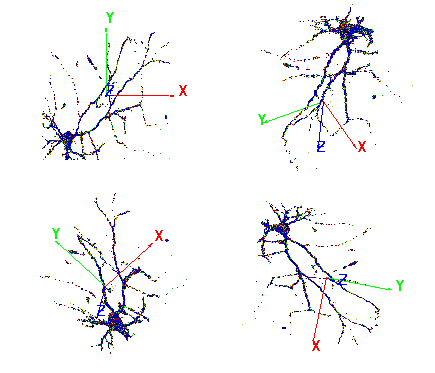
3D animations have much in common with 2D animations in producing either manual or programmatic change to the display as a function of time. Changes to the display can either be viewed directly or saved as individual frames in an MP4 movie. Animation of 3D displays has one important addition -- the ability to rotate the displayed object for observation from different angles.
The example below shows a composite of 4 rotations of a voxelgram generated from a two-photon image stack of a GFP-labeled cortical pyramidal neuron. Data provided by J. Eilers, Leipzig, Germany.

The following is QuickTime movie of a rotating Lissajous figure. Each frame in the movie is generated as a path plot and the viewing angle changes between consecutive frames.

Forum

Support

Gallery
Igor Pro 10
Learn More
Igor XOP Toolkit
Learn More
Igor NIDAQ Tools MX
Learn More